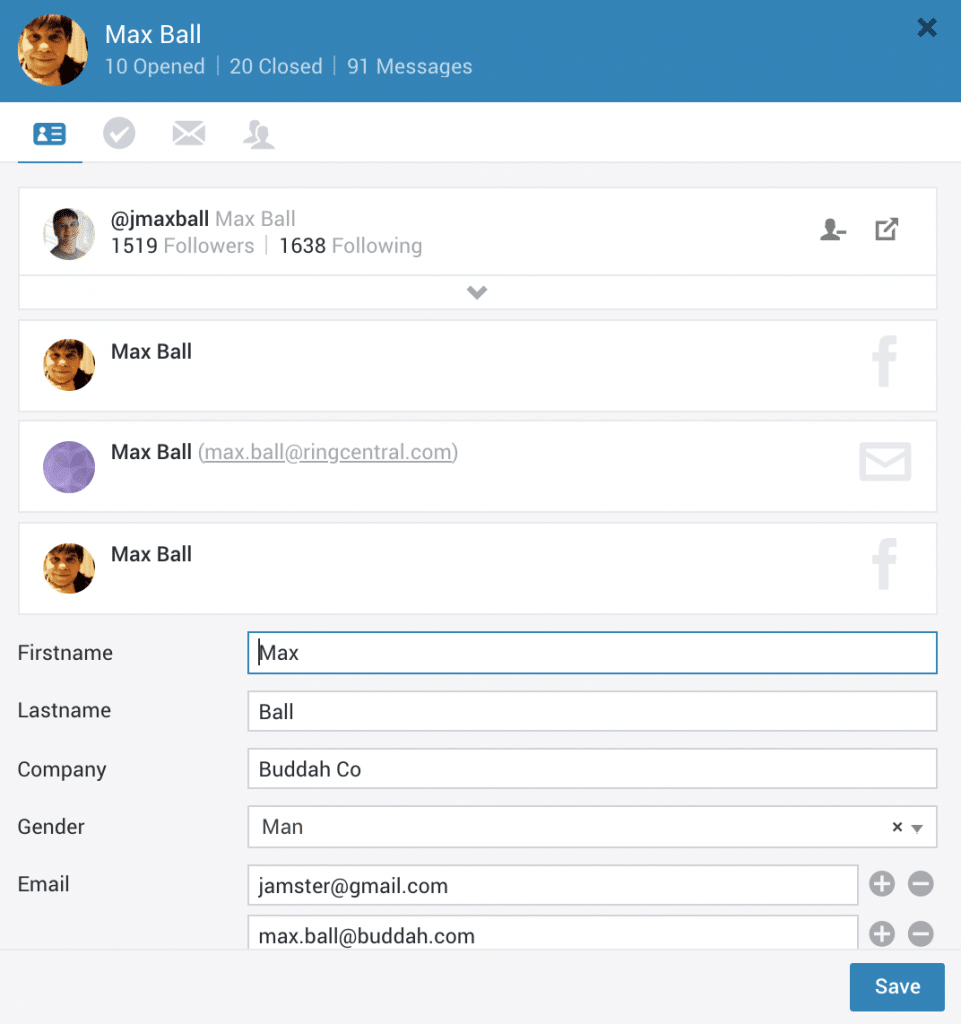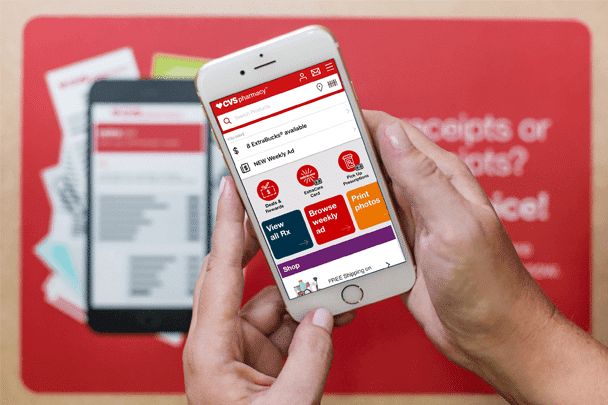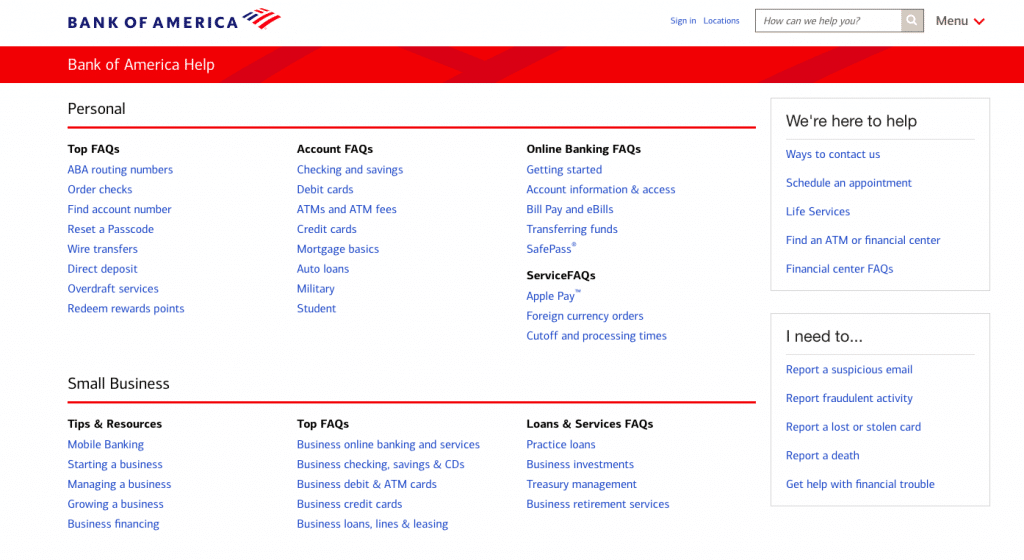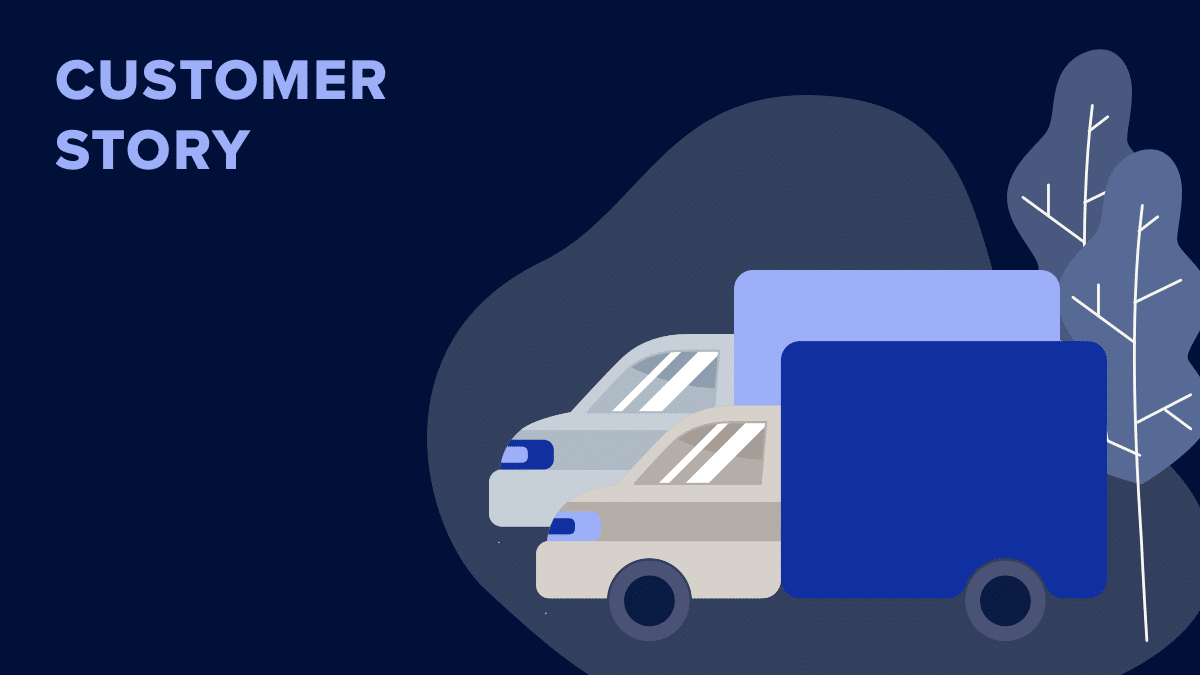Customer retention is a vital part of building a thriving business.
But maintaining a satisfied and loyal customer base takes a fair amount of thought and dedication.
Your existing customers are your primary assets. To earn their continued business, you need to offer a great customer experience and build solid customer relationships.
In this post, we’ll dig into the importance of customer retention and take a look at some strategies you could use to keep your customers coming back for more.
What we’ll cover:
- What is customer retention?
- Why is customer retention important?
- How to calculate your customer retention rate
- 8 tried-and-tested customer retention strategies
- 3 real-life customer retention strategies in action
Want to retain more customers? See how customer-obsessed your business is—take the quiz! 👇
What is customer retention?
Customer retention is the never-ending challenge of persuading your existing customers to stay with your business instead of leaving for someone else.
Depending on your business model, this might involve encouraging your customers to revisit your store or getting them to renew their annual subscription with you.
Achieving good customer retention generally means offering a great customer experience. After working so hard to get your customers in the first place, you have to keep on giving them good reasons to stick around and continue buying from you.
Why is customer retention important? (We’ve got the numbers to prove it…)
Good customer retention improves your customer lifetime value and increases revenue.
In other words, the more you can hold on to your customers, the more you can sell to them over time.
However, this simple fact is often overlooked. Many businesses focus the bulk of their efforts on acquiring new customers at the expense of satisfying the ones they already have. Almost 80% of companies spend less than 30% of their resources on retention-focused messaging1.
Here are five reasons why customer retention deserves the same attention as customer acquisition:
1. A direct benefit to your bottom line
Improving your customer retention can have a disproportionately beneficial effect on your bottom line.
For example, research by Frederick Reichheld of Bain & Company revealed that just a 5% improvement in customer retention can boost profits by 25%2.
2. Less expensive than customer acquisition
Customer acquisition is an essential part of any business strategy. After all, you can’t hold onto customers you don’t have.
But finding new customers is also expensive, costing up to seven times more than retaining an existing customer3.
What’s more, building a long-term relationship with a newly acquired customer can be up to 16 times more expensive4 than maintaining a relationship you’ve already established with an existing customer.
3. Less convincing required
Familiarity is one of the main reasons why retaining an existing customer is so much cheaper than generating and converting a new one.
Makes sense, right? Your existing customers are more inclined to trust you since they’ve already bought from you and know what to expect from doing business with you.
This makes it easier to get them interested in other products and services that you offer, which translates into lower marketing costs and a shorter sales process.
In fact, you have a 60–70% chance of selling to an existing customer5, compared to a 5–20% chance of selling to a new one.
4. Existing customers spend more
Retained customers are also generally higher-paying customers, with existing customers spending on average 31% more than newer ones6.
They also contribute most to business revenue, with as much as 68% of business coming from repeat purchasers7.
5. Brand advocacy
Customer retention is a strong indicator of customer satisfaction, and satisfied customers spread the word.
People are a whopping four times more likely to do business with you8 when they’ve been referred from someone they trust.
How to calculate your customer retention rate
Before taking any new steps to improve your customer retention, you should first get a handle on your customer retention rate.
Your customer retention rate measures the proportion of customers that stay with you over a given period of time—usually a week or a month.
Average retention rates vary by industry. For example, average monthly user retention is 5% in the finance industry, 4% in media, and just 1% in ecommerce9.
To calculate your retention rate, use this formula:
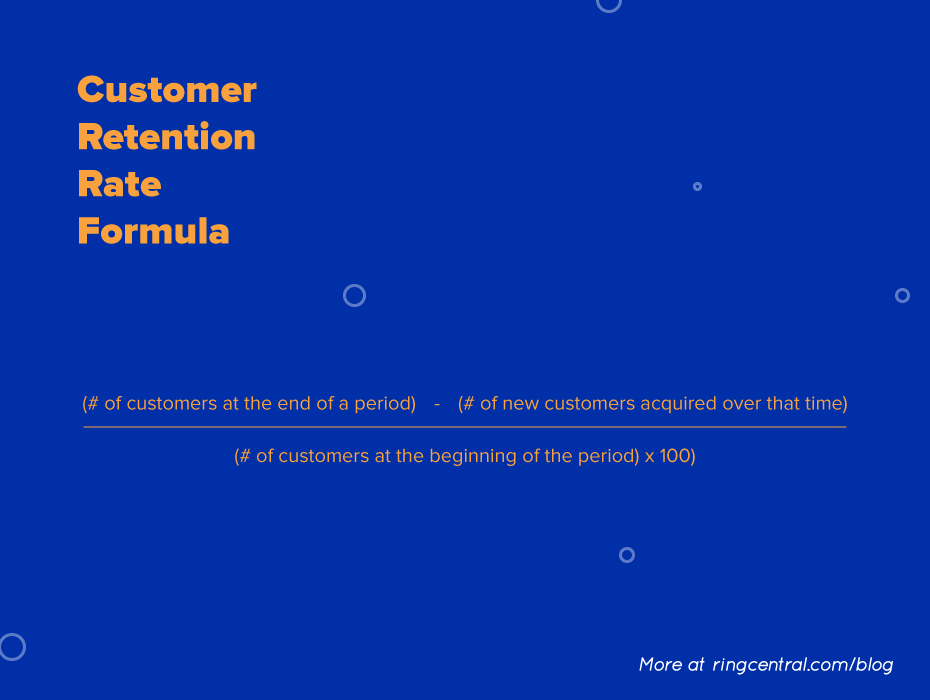
It might look a little confusing, but it’s actually pretty straightforward…
For example, imagine you started the month with 70 customers, then gained 40 new customers, as well as losing 13 customers. At the end of the month, you’d have 97 customers.
Here’s what your formula would look like:
((97 – 40) / 70) x 100 = 81.43%
Once you’ve calculated your retention rate, you’ll then have a benchmark that you can compare against so you know the effectiveness of any new customer retention strategies you put in place.
8 tried and tested customer retention strategies
How do you retain customers?
Well, besides offering a great product at a good price, customer retention comes down to building solid customer relations and delivering outstanding customer experiences.
These are the key ingredients that earn customer loyalty.
But where should you begin?
Here are eight robust customer retention strategies to help you on your way:
1. Set the right expectations
Managing your customer’s expectations is an important customer service skill—and one of the best ways to build a durable customer relationship.
Not only does it show customers that you’re competent, but it also gives you a clear gauge of the service standards that will either disappoint or delight your customer. In other words, by setting expectations early on, you’ll know what it takes to meet them and exceed them.
Setting expectations means spelling out to your customer how the relationship will work. This involves being transparent about your process, what’s included in your product or service packages, how you’ll communicate, timeframes, deadlines, data protection, refund policies, and so on.
Honesty is a key part of keeping customers on your side; don’t make promises you can’t deliver. If you aren’t able to meet a particular expectation, communicate it as early as possible and offer your customer an apology letter or email, and some form of compensation—like some extra store credits, a free subscription extension, or an upgrade.
Remember that your first interaction with a customer will set the tone for the rest of the relationship. If their initial experience with you is underwhelming, it’s likely that they’ll have low expectations of what you can do for them in the future.
Learn more about the anatomy of a good customer support email.
2. Prioritize great customer support
One of the central pillars of great customer service is great customer support.
Customer support refers to any activity geared towards helping customers resolve technical issues that they may encounter when using your product.
To have a positive impact on customer experience, your customer support should be:
- Fast: Customers want agile customer service. One easy way to do that? Speedy responses.
- Effective: Customers don’t just want quick answers; they want complete answers. Did you know that 67% of churn can be avoided if you resolve issues the first time they’re raised10?
- Friendly: Support agents should have a human touch. No one wants to talk to a robot. You might have heard the many great customer service stories of how Zappos has really nailed this with their team (more on that later).
- Consistent: Customers expect a seamless experience across different touchpoints. Don’t transfer a customer between different people on your customer service team and then make them repeat their information from the beginning every time. That’s just annoying.
Meeting the demands of high-quality customer support isn’t always easy, but the right customer support tools can make life much easier for agents.
For example, customers want to be able to contact you through whatever channel they find most convenient. In other words, you may need to offer omnichannel customer service so that customers can reach you by phone, email, live chat, or however else they like to communicate.
You can do this by using tools like RingCentral’s omni-digital customer engagement platform, which lets your agents manage all channels through a unified desktop:
And if you’re serious about providing a good customer experience that doesn’t make your customers repeat their situations every time, make sure your team can quickly pull up a record of their relationship with your business and any other relevant details.
For example, RingCentral’s customer profiles pool together information about your customers based on their history of interactions with your business. This means you can immediately get up to speed on their particular needs:
3. Keep customers excited about your (and their) success
Ideally, setting good customer expectations should help keep them excited about doing business with you.
You should try to keep customers thinking about how your product or service can help them achieve bigger and better things.
Customer success stories and case studies are a great way to help customers visualize the kind of results you can bring them and offer a clearer picture of how the customer relationship can work in practice.
“Sneak peek” content and product announcements are also excellent opportunities to get customers excited about the success they can achieve with your latest release.
Ultimately, customers buy from you because they want results of some kind. The more you show how you can help keep them achieving those results, the likelier it is they’ll stick around.
4. Emphasize team relationships
Over time, customers and clients will often develop a strong relationship with a specific member of your team, like an account director or customer success manager.
And while this may be a positive thing, it can pose a sliiiight risk to customer retention.
When a customer’s happiness with your business becomes dependent on their relationship with one individual, it makes you vulnerable if that individual changes roles or decides to leave your company.
One way to avoid these situations is to expose customers to multiple team members during meetings, calls, and email discussions. This way, they’ll develop good bonds with more than one member and won’t find it as difficult to adapt if someone leaves.
5. Provide value through content
One of the best ways to keep customers happy is to empower them to get as much as they can out of your product or service.
When a new customer comes on board, they shouldn’t be left in the dark about how to use your product and accomplish specific tasks.
But you don’t always have to guide them by the hand either. Most customers want at least the ability to find answers to their questions on their own, and 70% of them expect companies to offer “self-service” solutions11.
So as well as having real-life support agents for customers to contact, you should consider building a comprehensive knowledge base—full of useful articles, tutorials, and case studies—to make it easy for customers to teach themselves how to use your product:
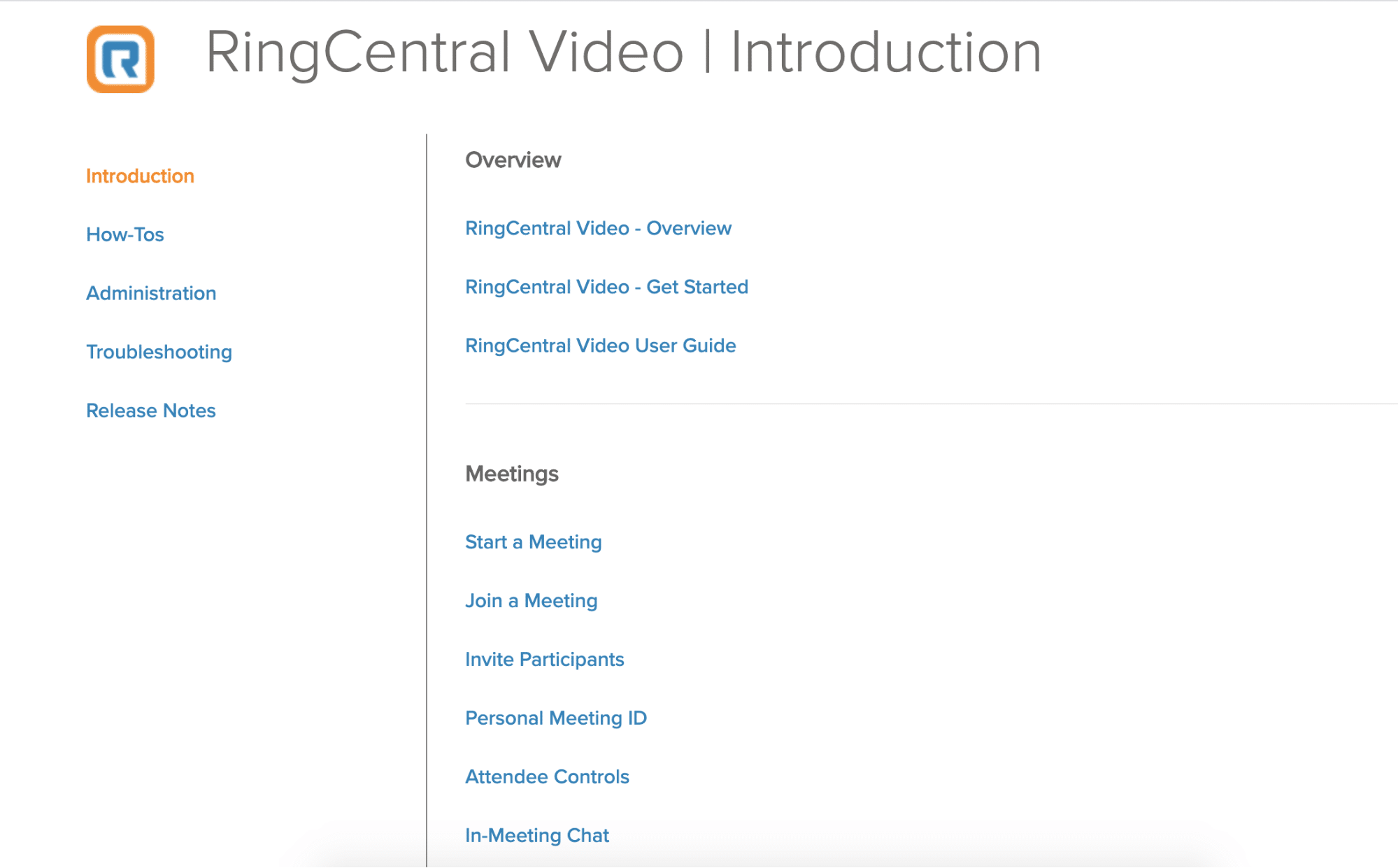
RingCentral’s knowledge base lets customers find answers to a wide range of FAQs.
Emails and newsletters are another great way to send customers targeted updates about new products or features they might want to try out. Or how about sending them a curated list of knowledge base articles that could give them unique or little-known tips?
6. Unleash the power of reciprocity
Showing customers that you care about them using thoughtful gestures can go a long way towards creating lasting goodwill.
Unexpected acts of kindness and generosity can really change how customers view your business and tap into their innate sense of reciprocity. When someone does something nice to you out of the blue, a part of you can’t help but want to return the favor.
Surprise gestures can be powerful whether they’re big or small. An extravagant gesture might be to send a loyal customer a pair of tickets to a big game, while a simpler gesture might be to write a handwritten thank-you note to a customer who’s just bought from you for the first time:
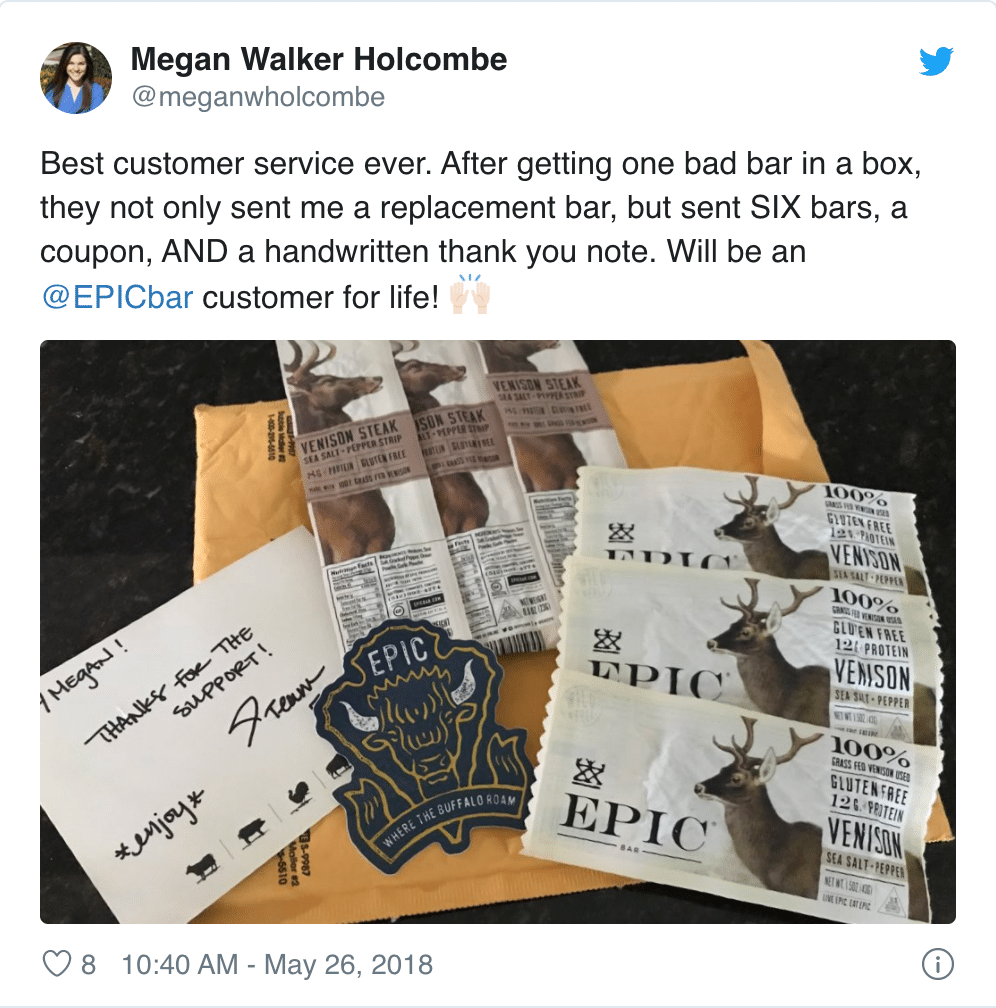
Kind gestures and surprise packages don’t have to cost a fortune. In many cases, it’s the thought that counts. The trick is to regularly brainstorm new ways to delight your customers in unique and meaningful ways.
7. Create a loyalty program
Nothing promotes customer retention and motivates repurchasing quite like a loyalty program.
In fact, members of loyalty programs spend up to 18% more than non-member customers.
When customers realize that they’ll be rewarded for doing repeat business with you, they’ll find it harder to drop you for someone else.
Your loyalty program could be as simple as giving customers a reward after placing a certain number of orders or spending a certain amount.
A popular way of implementing reward schemes is through loyalty apps. These are like digital-age loyalty cards that let customers collect credits after each transaction and redeem rewards in store. A good way to build customer engagement with these programs is to give them a head start with some welcome credits when they sign up.
8. Invite feedback
Acting on customer feedback is one of the most powerful ways to improve your customer experience—and retention.
When you listen to what unhappy and happy customers have to say about their experience with you, you get a clear understanding of what you’re doing right and how you could level up your offering.
The sooner you can act on any problems, the less likely it is customers will leave.
What’s more, asking customers for their opinions shows that you care about what they think. This is a huge factor affecting customer satisfaction: most customers (68%!) who churn do so because the company didn’t care enough about them12.
Learn how to use customer surveys to get useful feedback from your customers.
Pay close attention to the feedback that passes through your support team, comb customer reviews of your product, send emails to your subscribers inviting them to share their thoughts. Try anything that gives you an insight into what makes your customers tick—and what ticks them off.
3 real-life customer retention strategies in action
Now, let’s look at what some customer retention strategies look like in practice.
1. CVS’s ExtraCare rewards program
CVS is a company that really understands the value of loyal customers.
In 2016, CEO Larry J. Merlo revealed how the business focuses on reaching the 30% of customers that account for 75% of its revenue.
One of the biggest challenges facing a company like CVS is preventing customers from switching to services like Amazon to buy convenience pharmacy items. CVS manages to differentiate itself by stocking some exclusive brands, but its greatest differentiator is that it’s able to offer exceptional personalized shopping experiences using data from its ExtraCare program.
With more than 80 million active members, CVS ExtraCare customers get 2% worth of credit—called “ExtraBucks Rewards”—on each transaction. These credits can then be used towards other in-store purchases.
CVS sends customers personalized coupons based on their purchase history. For example, if you often buy shampoo, you might receive an email coupon for $3 off for your next hair care purchase. CVS also emails customers whenever items they frequently buy are discounted and lets them know how much they’ve saved each year by being a part of the program.
CVS has also created the CVS Pharmacy app that gives members easy access to their credits and coupons and even reminds in-store customers when there’s a relevant deal available in the app:
2. Bank of America’s self-service portal
As one of the biggest brands in the finance industry, Bank of America offers customers an excellent self-service portal to help them resolve common issues efficiently.
When landing on the main help page, users are asked to enter which state they’re in so that they get the most accurate information when clicking through.
The help page itself is clear and well-organized, letting people immediately recognize and select the topic most relevant to them. (Or they could just use the search bar to find what they need.)
The page also reserves space on the right-hand side for more urgent or difficult customer needs like reporting suspicious activity or reporting a death.
What’s more, the “We’re here to help” box reminds users that they can always contact a real-life representative if needed:
3. Zappos’s legendary kind gestures
Zappos lives and breathes customer satisfaction.
The business considers itself a customer service company first, and an apparel company second. And this ethos pays off: 75% of orders through Zappos come from repeat customers13!
The company’s customer service team is world-famous for pulling out all the stops to delight its customers.
For example, every year, the team sends 13,000 custom-made cards to customers to mark special occasions like weddings and birthdays14:
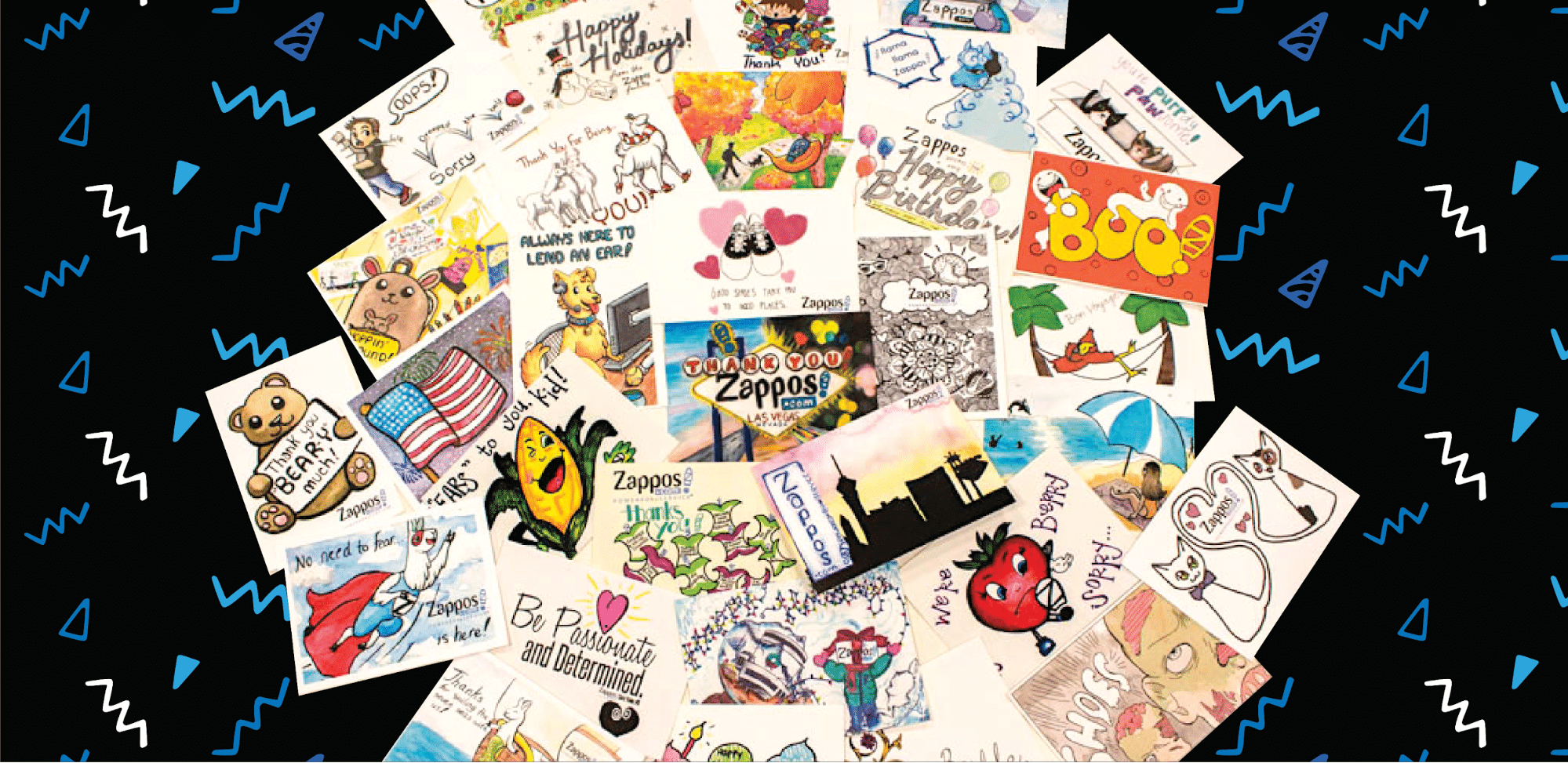
Members of the customer service team are also empowered to make gestures on a case-by-case basis. One such example involves the story of a customer named Debora15.
Debora called the customer service team because she wanted to buy a specific pair of shoes that were popular among people who stand all day. As they got talking, the customer service agent learned that Debora was a nurse at a facility caring for adults with special needs. She had been working there for over two decades and was well past her retirement age.
Touched by Debora’s commitment to her patients, the service agent sent Debora the shoes for free as well as cookies to the residents of the facility where she worked.
That kind of goodwill? Priceless.
Ready to improve your customer retention rate?
Customer retention is an essential component of growing a sustainable business.
Only by working hard to satisfy your customer base can you hope to foster the type of loyalty that keeps customers coming back and spreading the word.
Many businesses overlook customer retention in favor of lead generation. We’ve seen how this can be a costly mistake.
Take advantage of the retention strategies and examples covered in this post when coming up with your own plan to retain more customers.
1thedrum.com/news/2017/02/21/80-b2b-companies-overlook-customer-renewal-messaging
2media.bain.com/Images/BB_Prescription_cutting_costs.pdf
3salesforce.com/products/service-cloud/best-practices/customer-retention-rate
4customersthatstick.com/blog/customer-loyalty/customer-retention-infographic
5clickz.com/are-ecommerce-customer-retention-strategies-improving/105454
6invespcro.com/blog/customer-acquisition-retention
7loyalty360.org/Loyalty360/media/ResearchAndReportDocs/Research_Paper_Loyalty360_Survey.pdf
8nielsen.com/us/en/insights/article/2013/under-the-influence-consumer-trust-in-advertising
9mixpanel.com/data-reports/2019-product-benchmarks-report
10ameyo.com/blog/customer-experience-statistics-which-will-impact-your-business-in-2016
11slideshare.net/stevenvanbelleghem/the-self-serving-economy/13
12clientinsight.ca/the-1-reason-customers-leave
13sharpencx.com/blog/zappos-customer-service
14zappos.com/about/stories/pec-cards
15zappos.com/about/stories/clt-powered-by-service
Originally published Mar 16, 2020, updated Jul 25, 2024


